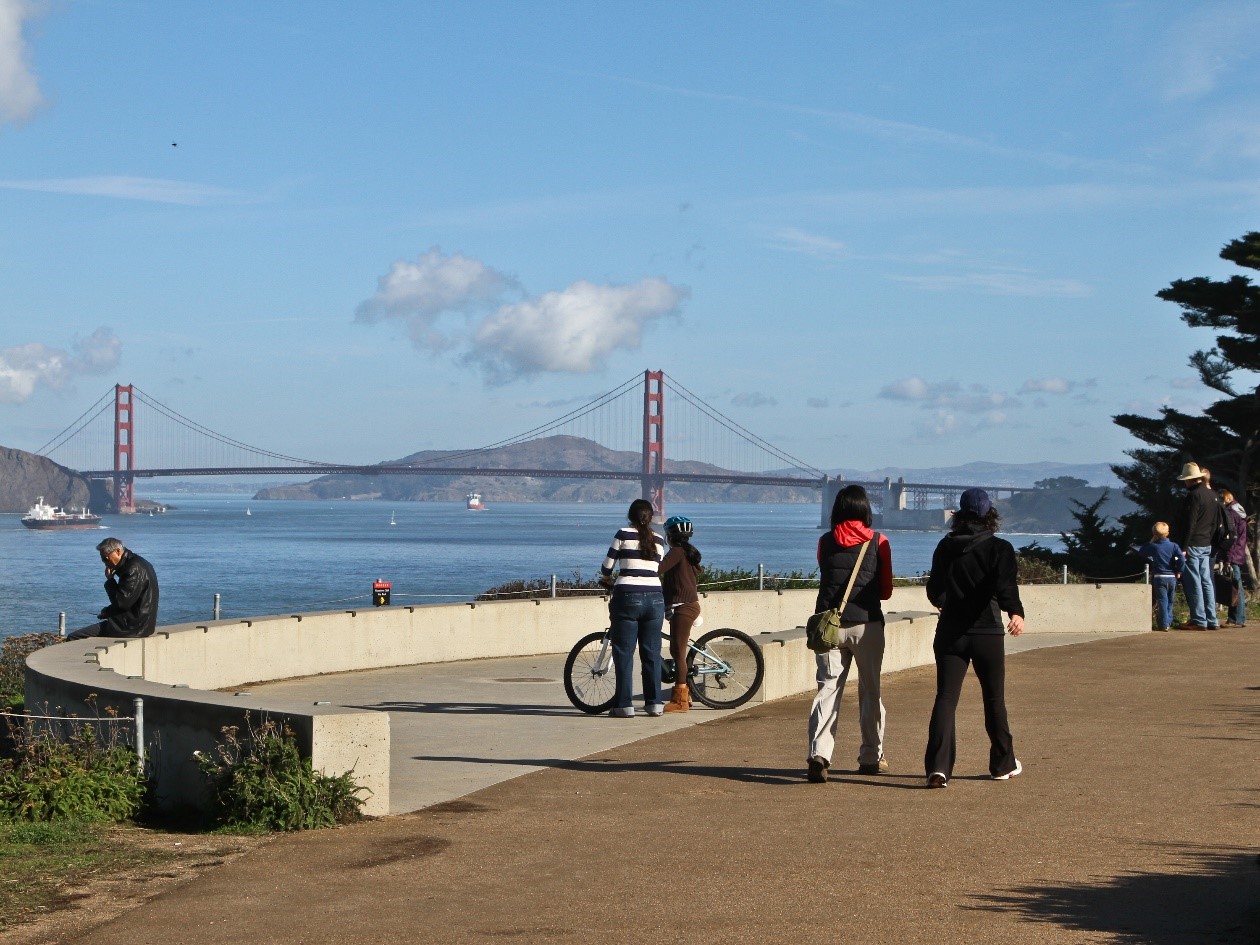News Release
You are viewing ARCHIVED content published online before January 20, 2025.
Please note that this content is NOT UPDATED, and links may not work. For current information,
visit https://www.nps.gov/aboutus/news/index.htm.

NPS/Will Elder
|
Subscribe
|
Contact: GGNRA Public Affairs, 415-561-4732
SAN FRANCISCO – In 2018, more than 17.5 million visitors visited Golden Gate National Recreation Area, Muir Woods National Monument and Fort Point National Historic Site, and spent $1.2 billion in communities near the parks.This spending supported 12,658 jobs in the local area, and had a cumulative benefit to the local economy of $1.6 billion, according to a recent National Park Service report.
Golden Gate National Recreation Area, the most visited national park in the nation, hosted 15.2 million visitors who spent more than $1 billion in nearby communities, supporting 10,614 jobs, with a benefit to the local economy of nearly $1.4 billion.
The 1.4 million visitors to Fort Point National Historic Site spent $82.7 million, supported 971 jobs, and had a cumulative benefit of $113 million. Iconic Muir Woods National Monument had nearly a million visitors, who spent $108 million in gateway communities to contribute 1,073 local jobs and $147 million in economic output in these communities.
"We are thrilled to provide an exceptional national park experience to our communities and visitors from all around the world," said Superintendent Laura E. Joss. "Our talented National Park Service staff, concessionaires, non-profit partners and community businesses are committed to providing a wide range of services for visitors from all over the world.”
"These national park units provide recreation, relaxation, and inspiration for Bay Area residents and international visitors alike. We thank our communities for their support to San Francisco's 'backyard national parks'!"
The peer-reviewed visitor spending analysis was conducted by economists Catherine Cullinane Thomas and Egan Cornachione of the U.S. Geological Survey and Lynne Koontz of the National Park Service. The report shows $20.2 billion of direct spending by more than 318 million park visitors in communities within 60 miles of a national park. This spending supported 329,000 jobs nationally; 268,000 of those jobs are found in these gateway communities. The cumulative benefit to the U.S. economy was $40.1 billion.
In 2018, visitors spent about $6.8 billion for lodging, which accounts for the largest share of visitor spending. Visitors spent $4 billion in restaurants and bars and another $1.4 billion at grocery and convenience stores, making food expenses the second largest spending area.
Visitor spending on lodging supported more than 58,000 jobs, while visitor spending in restaurants supported more than 61,000 jobs. In the recreation industries visitor spending supported more than 28,000 jobs, and spending in retail supported more than 20,000 jobs.
An interactive tool produced by the report’s authors enables users to explore visitor spending, jobs, labor income, value added, and output effects by sector for national, state and local economies. Users can also view year-by-year trend data. The interactive tool and report are available at the NPS Social Science Program webpage: www.go.nps.gov/vse.
The 2018 Visitor Spending Effects analysis incorporates newly available survey data for Golden Gate NRA and 18 additional parks in the National Park System. The survey was part of a pilot project to develop long-term, scientific monitoring and collection of visitor data during a park’s peak season. Previous spending estimates for Golden Gate NRA were calculated by using generalized visitor spending data from other parks in the National Park System.
The new survey data showed us that people spent more time in Golden Gate NRA, stayed longer in gateway communities and spent more money during their visit. The updated data contributed to a 184.7% increase in visitor spending estimates for Golden Gate NRA this year. The new data accounts for 171% of this increase, while the remainder is due to inflation and increased park visitation. The new data showed an upward effect on visitor spending estimates for the state of California and for the Pacific West region.
To learn more about national parks in California and how the National Park Service works with California communities to help preserve local history, conserve the environment, and provide outdoor recreation, go to www.nps.gov/california.
For information about Point Reyes National Seashore, please go to www.nps.gov/pore. For information about San Francisco Maritime National Historical Park, visit www.nps.gov/safr.
Last updated: May 30, 2019
